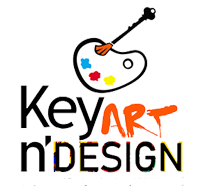| Events | Dates |
| State date for CEED registration form | Mid-September |
| End Date to fill the Application Form without late fee | Mid-November |
| Due date to register for CEED with late fee | Mid- November |
| Release of CEED Admit Card | Start of January |
| CEED Exam | Mid-January |
| Announcement of CEED Result | Mid-March |
Exam Pattern CEED
What are the exam details of CEED?
What is the structure CEED exam?
| Section | Mark if correct | Mark if wrong | Mark if not attempt | Maximum marks |
| NAT | 3 | 0 | 0 | 24 |
| MSQ | 3 | -0.25 | 0 | 30 |
| MCQ | 2 | -0.25 | 0 | 46 |
What is the generic syllabus for CEED exam?
- Visualization and spatial ability – In this part of CEED 2021, questions will be asked based on the pictorial and diagrammatic to scrutinize student’s capability of transformation/ manipulation of 2D shapes and 3D objects followed by their spatial relationships.
- Environmental and social awareness – Candidates will be assessed for their general awareness related to the environmental factors, such as climate, population, water, vegetation, pollution, weather, natural resources and their implications on the design of products, images, infrastructure and environment. Students aspiring to appear in the entrance test must be fond of design terminologies, social and cultural connection with design, history of the designed artefact, and socially responsible and environmentally sustainable design responses.
- Analytical and logical reasoning – Students must sagaciously examine the given information and answer judiciously. Aspirants must be able to probe the opinions, arguments or solutions against relevant norms. Candidates must have the logical and structured thinking to deduce from a short passage, which statements are apt responses to the posed question.
- Language and creativity – Students must have the ability to understand passages in a commonly used English language. Aspiring candidates must think creatively in the matter of alternatives, facility to differentiate innovative options and think out of the box.
- Design thinking and problem solving – Aspirants must understand the context, the user and the constraints and select the most relevant solution for the given design problem.
- Observation and design sensitivity – Candidates must have the ability to observe the hidden properties in day to day life and think rigorously about them. Aspiring students must be able to notify the variance in visual properties and aesthetic outcomes.
